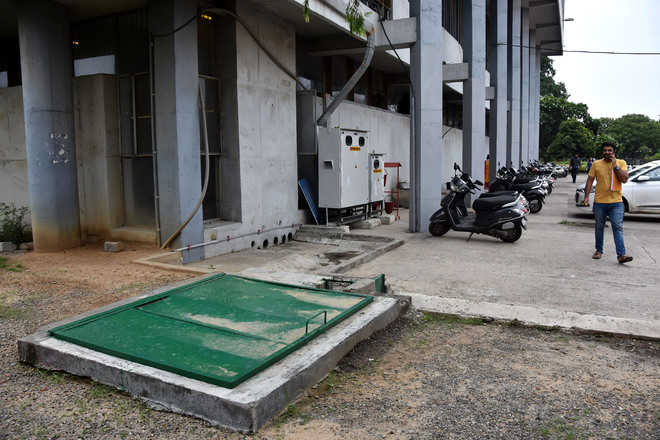Minna Zutshi
Tribune News Service
Ludhiana, July 31
The groundwater is declining at an average rate of 50 cm annually in Punjab, which is quite alarming. There is a dire need to augment groundwater which can be done through rainwater harvesting, according to experts.
Groundwater can be recharged through rooftop rainwater harvesting and village ponds, too, can be used for recharging groundwater, say experts from the Punjab Agricultural University (PAU) here.
The practice of rainwater harvesting through rooftop can be adopted in educational institutes, religious places, marriage palaces, shopping complexes and community centres. The mass-level adoption of this technology can very well improve the groundwater resources, water quality, road conditions as well as reduce the load on sewage.
“In Punjab there are 13 lakh and 27 lakh residential houses in urban and rural areas, respectively. Assuming the average covered area of each house to be 100 sq m, about 135 million cubic metre of rainwater can be harvested for groundwater recharge each year based upon average rainfall condition of each district. This will not only improve the quality of groundwater but also check, to some extent, the decline in water table. It will also improve the condition of roads and reduce the mosquito problem,” said Dr KG Singh, Head, Department of Soil and Water Engineering, PAU, when contacted.
However, he cautioned that rainwater harvesting was to be done using scientific methodology and under expert guidance. “Filtration is a must for rainwater harvesting. The water collected from the rooftop has some surface contamination due to silt, clay etc, which has to be removed before recharging. For the purification of such water, a filter is required.” The recharge structure consists of mainly three parts, ie collection system, filtration unit and the recharge well. The cost of the structure is site specific, depending upon the roof area, rainfall pattern and ecological condition of the area.
With over 18,000 village ponds in the state, renovation of ponds can be a significant step in recharging groundwater. According to an estimate of the department, the renovation and reuse of village pond water for irrigation will reduce the groundwater withdrawal by about 6 cm per year. Dr KG Singh suggested: “The ponds should be renovated and rejuvenated to increase the water-holding capacity and to ensure that water quality is fit for use in agriculture. Renovation of village ponds has a positive impact on groundwater conservation in the areas with declining water table.”
Unlock Exclusive Insights with The Tribune Premium
Take your experience further with Premium access.
Thought-provoking Opinions, Expert Analysis, In-depth Insights and other Member Only Benefits
Already a Member? Sign In Now











